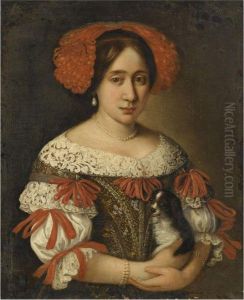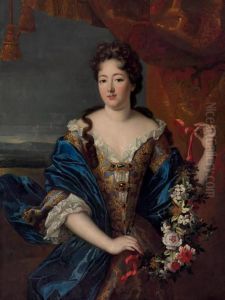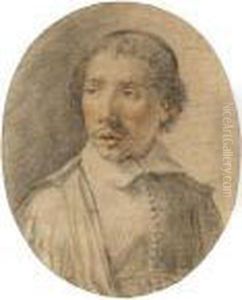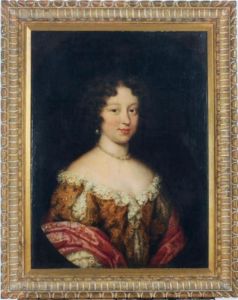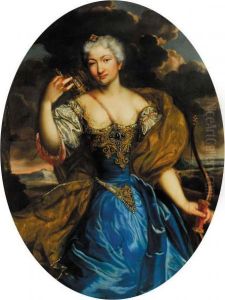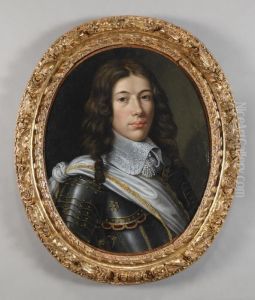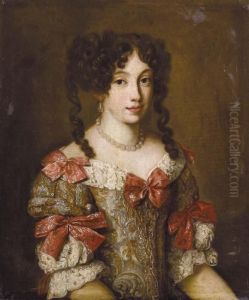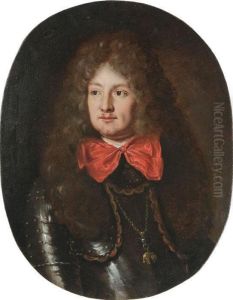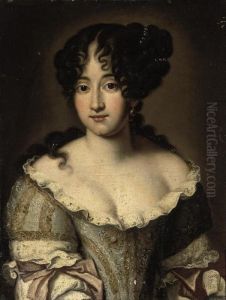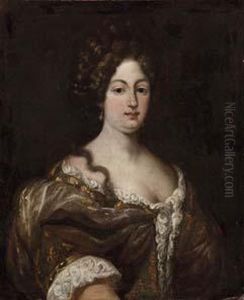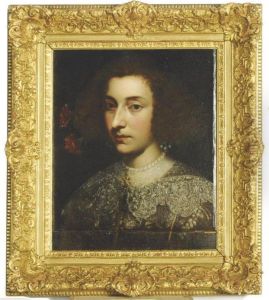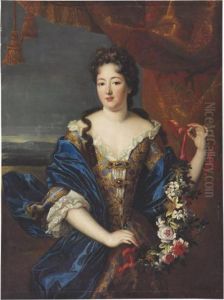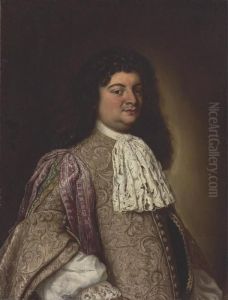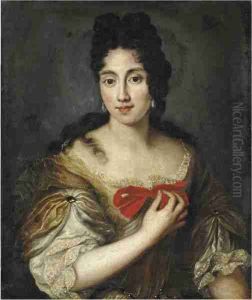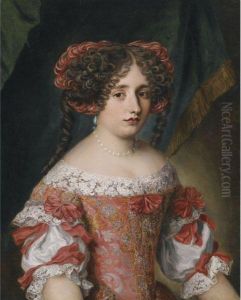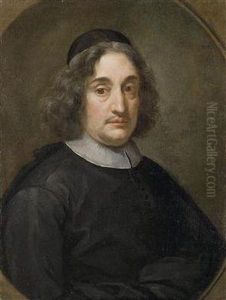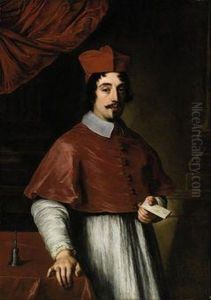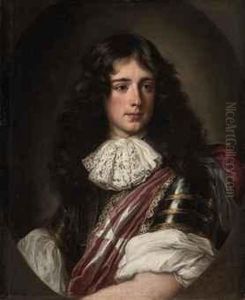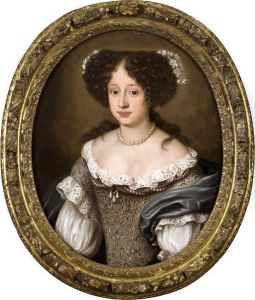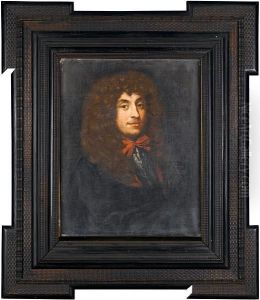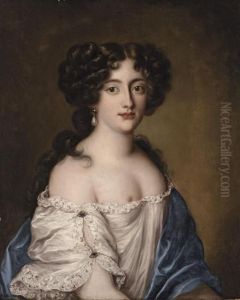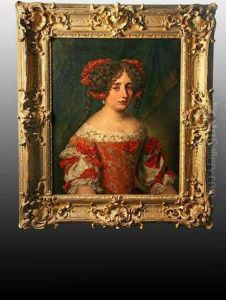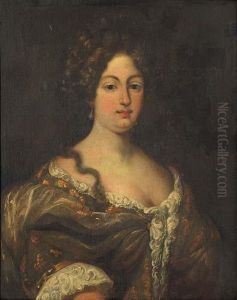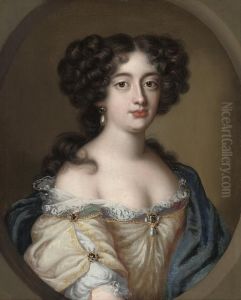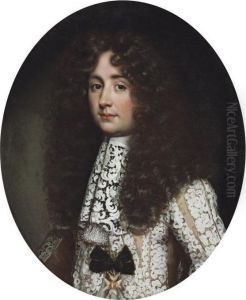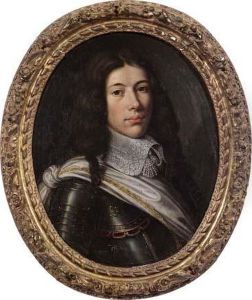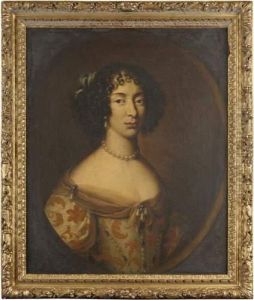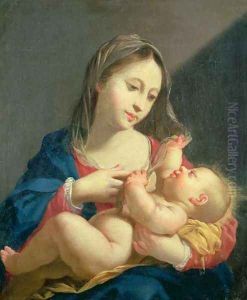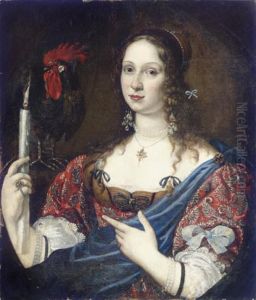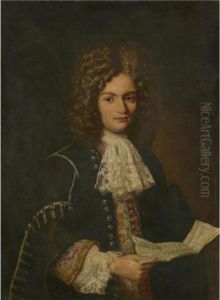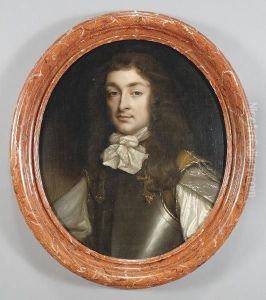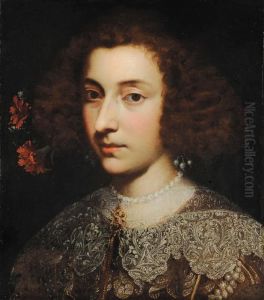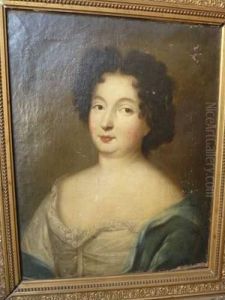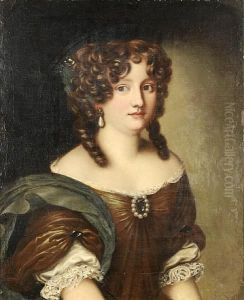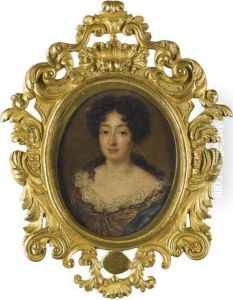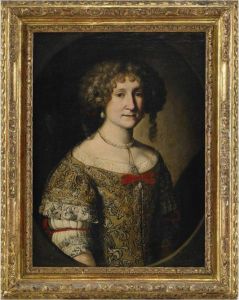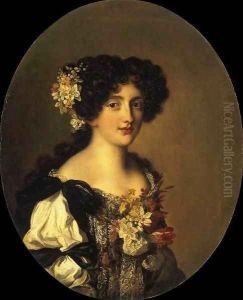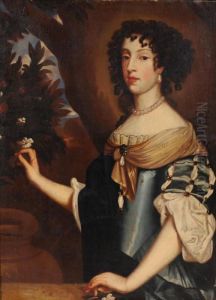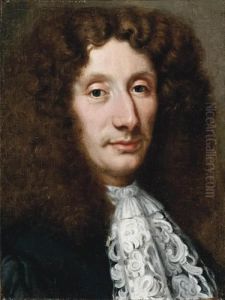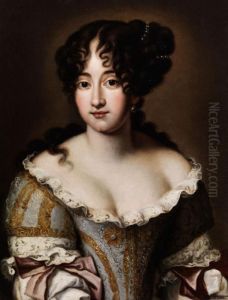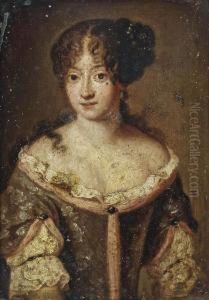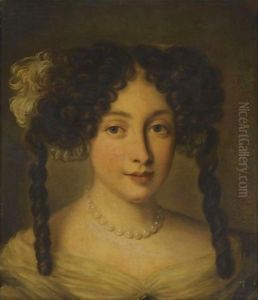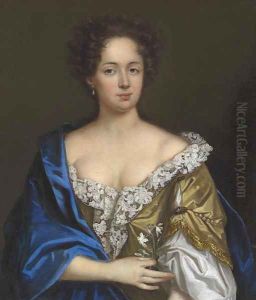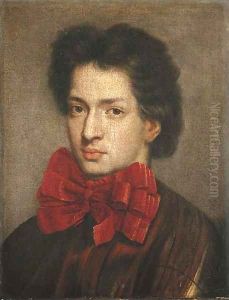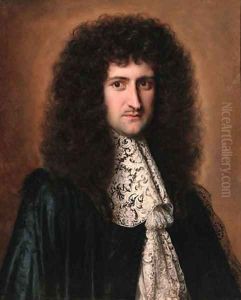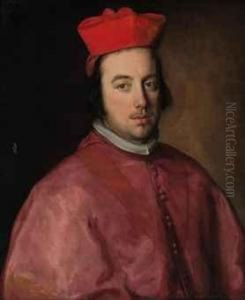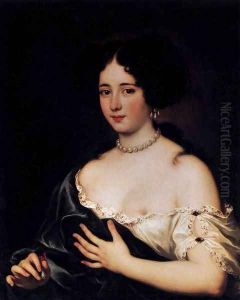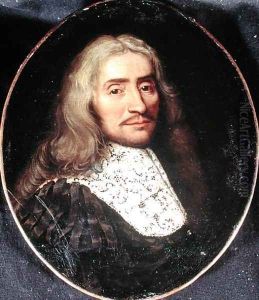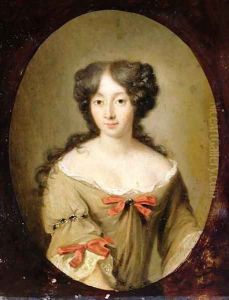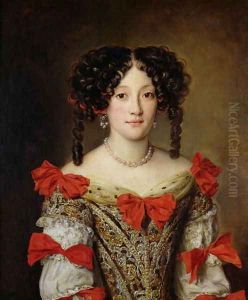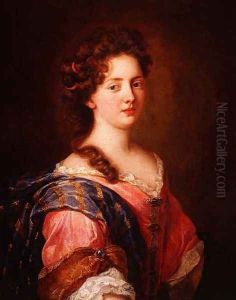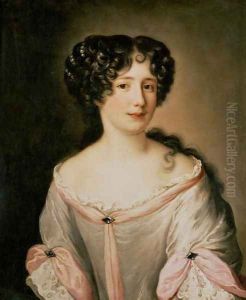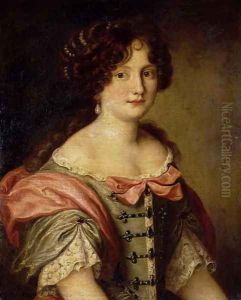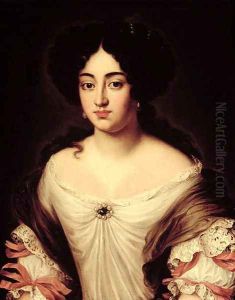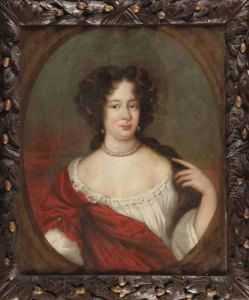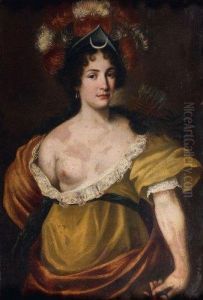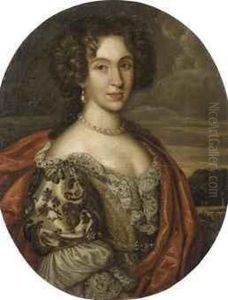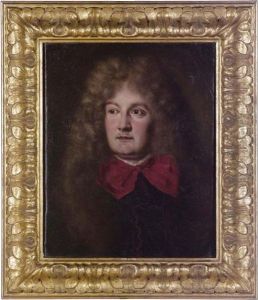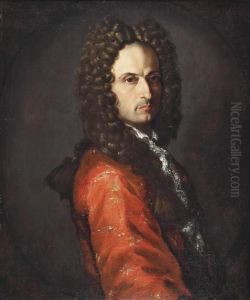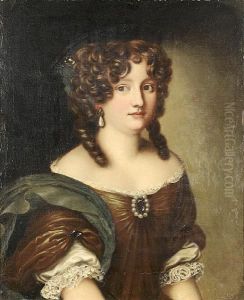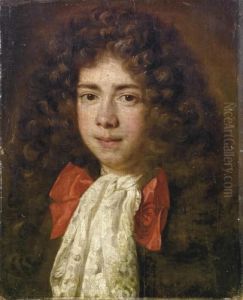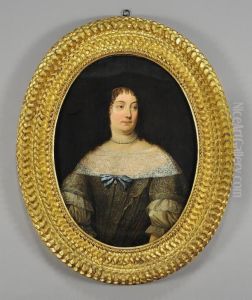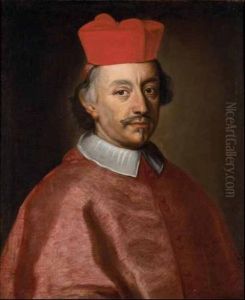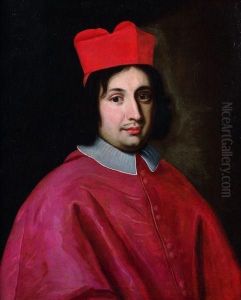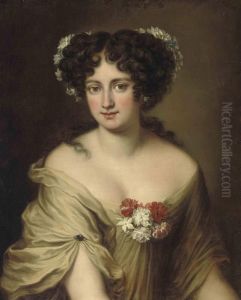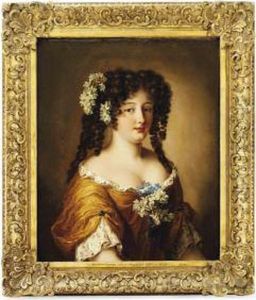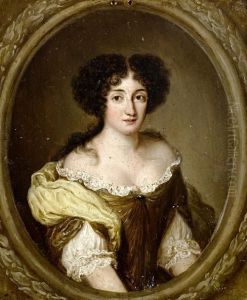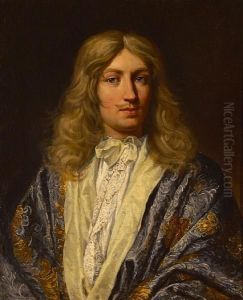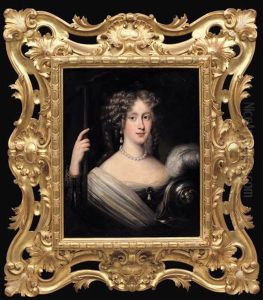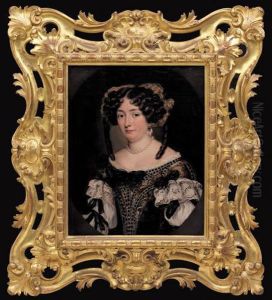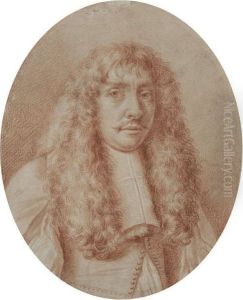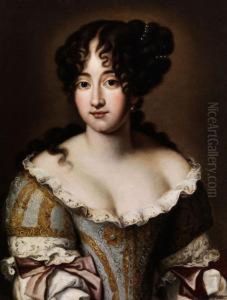Jacob Ferdinand Voet Paintings
Jacob Ferdinand Voet was a Flemish portrait painter who was active in the second half of the 17th century. He was born in Antwerp, Belgium in 1639, during a period marked by the flourishing of Baroque art. Voet is especially known for his portraits of the European aristocracy, which exhibit a refined, elegant style that was highly sought after by his contemporaries.
Voet received his artistic training in Antwerp, which was a major center for art and commerce during the 17th century. The city's artistic atmosphere, characterized by the influence of prominent figures such as Peter Paul Rubens, would have played a significant role in shaping Voet's early development as an artist. Though details about his early life and training are not entirely clear, it is believed that he became a master in the Antwerp Guild of Saint Luke, the local guild for painters, around 1651.
In his early career, Voet traveled to Italy, where he spent a significant amount of time. He worked in various cities including Rome, where he became known for his portraits. His style was influenced by the Italian Baroque and he became particularly adept at capturing the opulence and grandeur of his sitters, often depicting them in luxurious clothing with great attention to detail. Voet's ability to portray the texture of fabrics and the subtleties of flesh tones won him a considerable reputation.
By the 1660s, Voet had established himself as a court painter in Rome, and his services were in high demand among the Roman aristocracy and foreign dignitaries visiting the city. His success in Rome eventually led to his appointment as a portraitist at the court of Queen Christina of Sweden, who had abdicated her throne and taken residence in Rome. Voet's portraits from this period are notable for their psychological insight and the vivid characterizations of his subjects.
However, Voet's career in Rome came to an abrupt end when he was expelled from the Papal States around 1671. The reasons for his expulsion are not entirely clear, but it is speculated that it may have been due to the often scandalous nature of his portraits, which sometimes included depictions of courtesans and other controversial figures.
After leaving Rome, Voet traveled to France, where he continued his work as a portrait artist. He found patronage among the French nobility, and his portraits from this period continued to reflect the elegance and sophistication of his earlier works. Voet's ability to adapt to the tastes of his patrons while maintaining his distinctive style contributed to his enduring success.
Jacob Ferdinand Voet died in Paris in 1689. Though he may not be as widely recognized as some of his contemporaries, his work remains an important example of the Baroque portrait tradition. His paintings can be found in various museums and collections around the world, appreciated for their technical skill and their portrayal of the grandeur of the European elite during the Baroque period.
